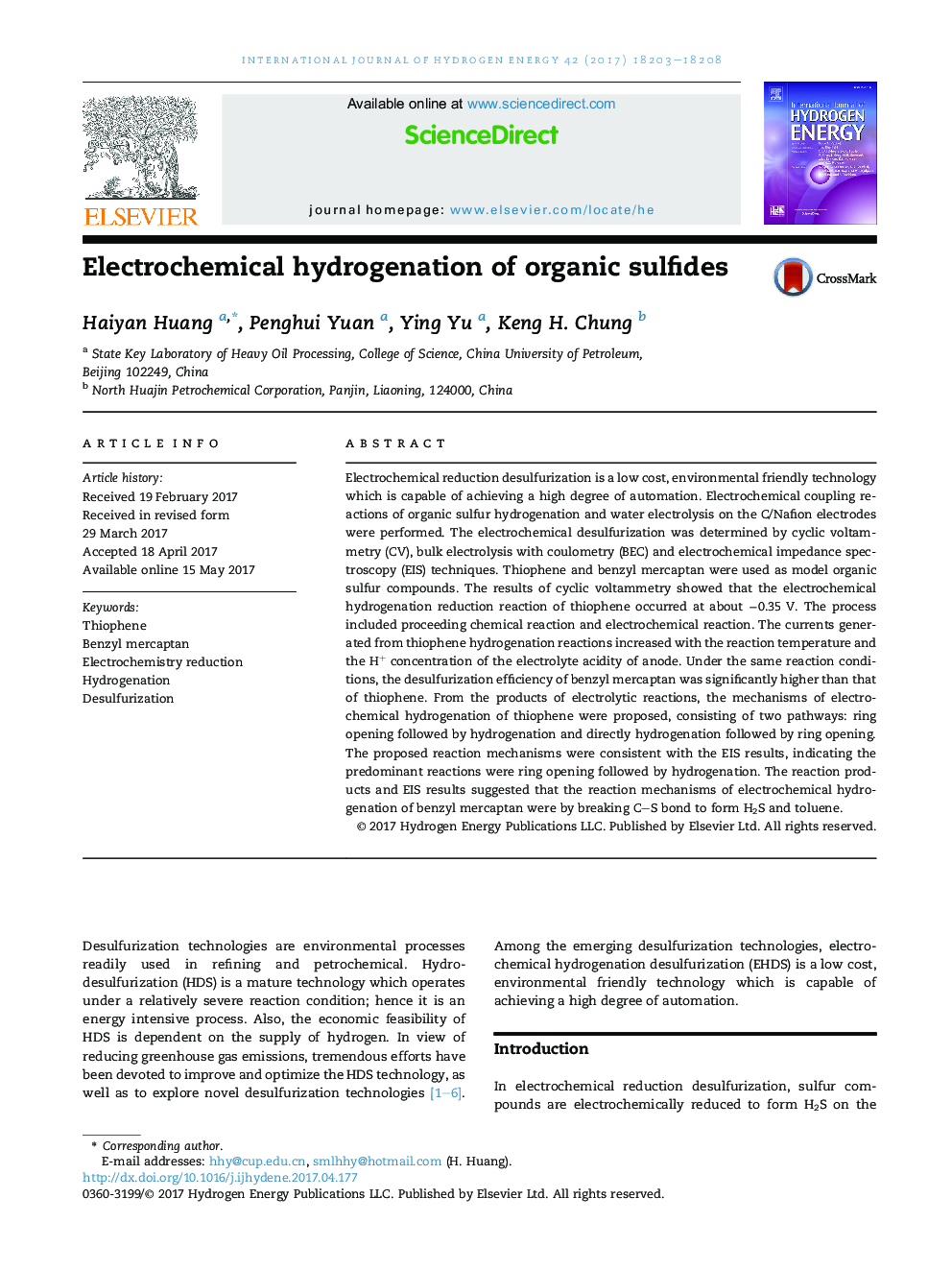| Article ID | Journal | Published Year | Pages | File Type |
|---|---|---|---|---|
| 5146179 | International Journal of Hydrogen Energy | 2017 | 6 Pages |
â¢We propose electrochemical coupling reaction of organic sulfur hydrogenation and water electrolysis.â¢We study the desulfurization efficiency and operating conditions of the coupling reactions.â¢We discuss the reaction mechanisms and kinetics of electrochemical reduction desulfurization.â¢The processes of electrochemical hydrogenation of thiophene and benzyl mercaptan have different pathways.
Electrochemical reduction desulfurization is a low cost, environmental friendly technology which is capable of achieving a high degree of automation. Electrochemical coupling reactions of organic sulfur hydrogenation and water electrolysis on the C/Nafion electrodes were performed. The electrochemical desulfurization was determined by cyclic voltammetry (CV), bulk electrolysis with coulometry (BEC) and electrochemical impedance spectroscopy (EIS) techniques. Thiophene and benzyl mercaptan were used as model organic sulfur compounds. The results of cyclic voltammetry showed that the electrochemical hydrogenation reduction reaction of thiophene occurred at about â0.35Â V. The process included proceeding chemical reaction and electrochemical reaction. The currents generated from thiophene hydrogenation reactions increased with the reaction temperature and the H+ concentration of the electrolyte acidity of anode. Under the same reaction conditions, the desulfurization efficiency of benzyl mercaptan was significantly higher than that of thiophene. From the products of electrolytic reactions, the mechanisms of electrochemical hydrogenation of thiophene were proposed, consisting of two pathways: ring opening followed by hydrogenation and directly hydrogenation followed by ring opening. The proposed reaction mechanisms were consistent with the EIS results, indicating the predominant reactions were ring opening followed by hydrogenation. The reaction products and EIS results suggested that the reaction mechanisms of electrochemical hydrogenation of benzyl mercaptan were by breaking CS bond to form H2S and toluene.
